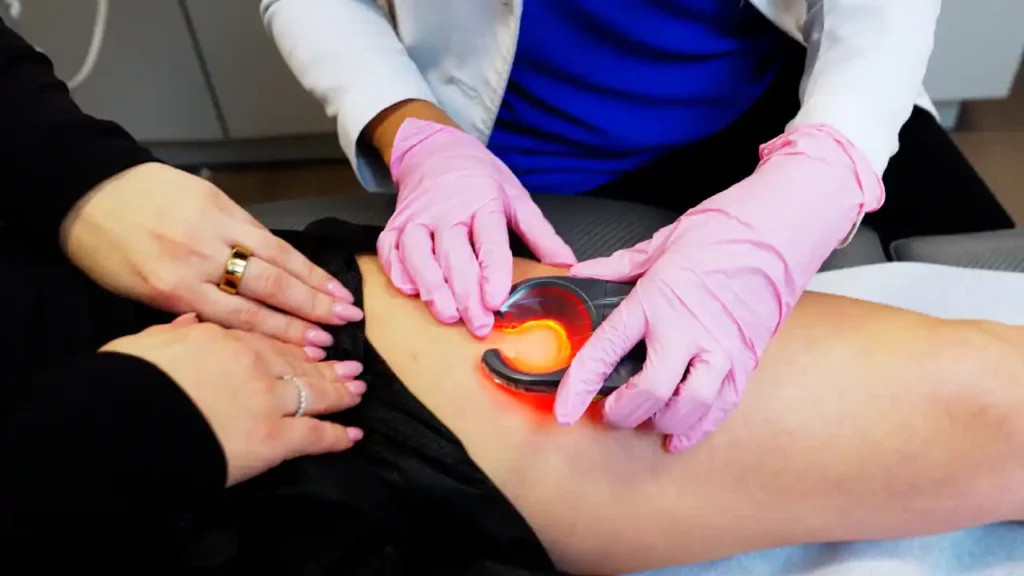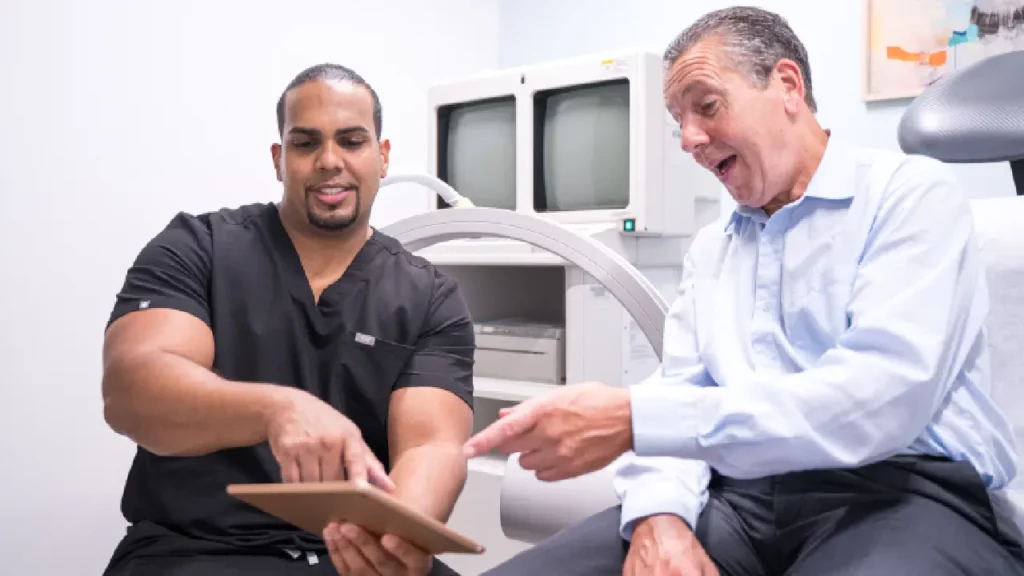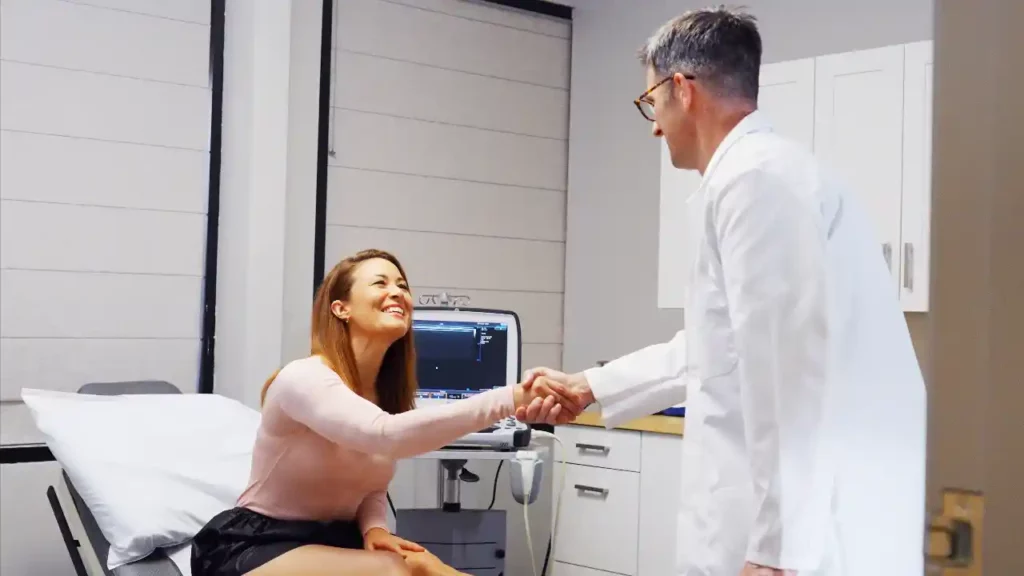How to Reverse Venous Insufficiency? Best Treatments
After a long day of standing or sitting, you may start to notice that your legs feel heavy, fatigued, or even swollen. You might have observed unsightly veins creeping along your legs, turning blue or purple, which can cause discomfort. You may also experience aches or pain, particularly after extended periods of inactivity. These could indicate venous insufficiency, a condition in which your veins struggle to effectively circulate blood back to your heart.
Venous insufficiency can be troubling, but the good news is that there are effective treatments that can improve your condition. At Vein Treatment, we specialize in helping you reverse venous insufficiency and find relief through the latest minimally invasive vein treatments. Whether you’re dealing with spider veins, varicose veins, or symptoms of venous insufficiency, we have solutions tailored to your needs.
What Are the Best Lifestyle Changes to Reverse Venous Insufficiency?
While lifestyle changes cannot directly cure venous insufficiency, they can greatly improve your symptoms and prevent the condition from worsening. If you’re not currently experiencing venous insufficiency but are at high risk, these lifestyle changes can reduce the chances of developing the condition in the first place. Below are some key lifestyle changes that can have a positive impact on your venous health.
Elevate Your Legs
One of the simplest and most effective ways to reduce the symptoms of venous insufficiency is to elevate your legs. When you elevate your legs above heart level, gravity assists in blood circulation back to the heart, reducing swelling and discomfort. Try elevating your legs for 15 to 30 minutes a few times daily. You can do this by lying down and propping your legs up on pillows or using an adjustable leg rest.
Stay Active and Exercise Regularly
Exercise is crucial in improving circulation and preventing venous insufficiency from worsening. Activities that engage the muscles in your legs, like walking, cycling, and swimming, can strengthen the calf muscles and help pump blood back toward the heart. These exercises improve venous return and reduce the strain on your veins. To enhance circulation, aim for at least 30 minutes of moderate exercise on most days of the week.
Maintain a Healthy Weight
Carrying excess weight places added pressure on your veins, especially in the lower extremities. This extra pressure can weaken the vein walls and valves, contributing to venous insufficiency. Maintaining a healthy weight through a balanced diet and regular exercise can help reduce the strain on your veins and improve circulation. Managing your weight may also alleviate discomfort like swelling, pain, and fatigue in the legs.
Avoid Prolonged Standing or Sitting
Standing or sitting for long periods can exacerbate the symptoms of venous insufficiency. If your job or daily routine requires standing, take frequent breaks to walk around and stretch your legs. Similarly, if you sit for extended periods, make sure to stand up, move around, and stretch your legs every 30 to 60 minutes. These small changes can help your veins function more effectively and reduce the chances of blood pooling in the lower limbs.
Wear Compression Stockings
Compression stockings are specially designed to help your veins and leg muscles circulate blood more efficiently. They apply gentle pressure to the legs, starting at the ankles and gradually becoming less tight as they move up the leg. This pressure helps to prevent blood from pooling in the veins and reduces swelling. Wearing compression stockings regularly can provide significant relief from symptoms such as heaviness, aching, and swelling.
Eat a Balanced Diet Rich in Fiber and Antioxidants
A diet rich in fiber and antioxidants can help improve circulation and prevent conditions that contribute to venous insufficiency, like constipation. Fiber-rich foods, such as whole grains, fruits, and vegetables, help promote healthy blood circulation and prevent constipation, which can increase the pressure in your veins. Antioxidants found in foods like berries, citrus fruits, and dark leafy greens can reduce inflammation in the body and protect vein health.
What Is the Best Treatment for Venous Insufficiency?
What is the best treatment for venous insufficiency? Venous insufficiency treatments aim to relieve symptoms by improving circulation and rerouting accumulated blood to healthier veins. The best treatment for you will depend on your individual condition and symptoms, as well as factors like your overall health. At Vein Treatment, we offer a variety of minimally invasive venous insufficiency treatments that can help restore normal blood flow and alleviate the discomfort caused by venous insufficiency.
Endovenous Laser Ablation (EVLA)
Endovenous Laser Ablation (EVLA) is a highly effective venous insufficiency treatment. During the procedure, a laser fiber is inserted into the affected vein through a small incision. The laser energy heats and seals the vein, causing it to collapse and be absorbed by the body. This reroutes blood flow to healthier veins and improves circulation. EVLA is minimally invasive, requires only local anesthesia, and most patients can resume normal activities immediately.
Sclerotherapy
Sclerotherapy is a popular treatment for spider veins and small varicose veins. During the procedure, a special solution is injected into the affected vein. This solution causes the vein to collapse, and over time, it is absorbed by the body. Sclerotherapy is an outpatient procedure that can be performed in our vein clinic with minimal discomfort and downtime. It’s an ideal treatment for individuals with visible veins that cause cosmetic concerns.
VenaSeal
VenaSeal is a newer treatment for venous insufficiency that uses a medical adhesive to close affected veins. Unlike other vein treatments, VenaSeal doesn’t require heat or chemicals. The adhesive is injected into the vein, sealing it shut and rerouting blood to healthier veins. This treatment is ideal for patients who want a quick recovery, as it requires no need for compression stockings after the procedure and has minimal downtime.
Radiofrequency Ablation (RFA)
Radiofrequency Ablation (RFA) is similar to EVLA but uses radiofrequency energy instead of laser energy to close affected veins. The procedure is performed under local anesthesia, and the catheter is inserted into the vein to deliver controlled heat, which causes the vein to collapse and reroute blood to healthier veins. RFA involves a quick recovery and minimal discomfort.
Ambulatory Phlebectomy
Ambulatory Phlebectomy is a surgical procedure for removing large, surface-level varicose veins. Small incisions are made along the length of the affected vein, and the vein is carefully extracted. This procedure is ideal for patients with large varicose veins that cannot be treated with less invasive methods like sclerotherapy or laser ablation.
While venous insufficiency can be a challenging condition, it is treatable. At Vein Treatment, our board-certified vein specialists offer various treatment options to address your unique needs. Contact us to schedule a consultation and take the first step toward reversing chronic venous insufficiency today. Learn about our vein treatments and find the right solution for your needs. We accept most insurance plans and have state-of-the-art vein treatment clinics across New York, New Jersey, California, and Maryland to serve you.









